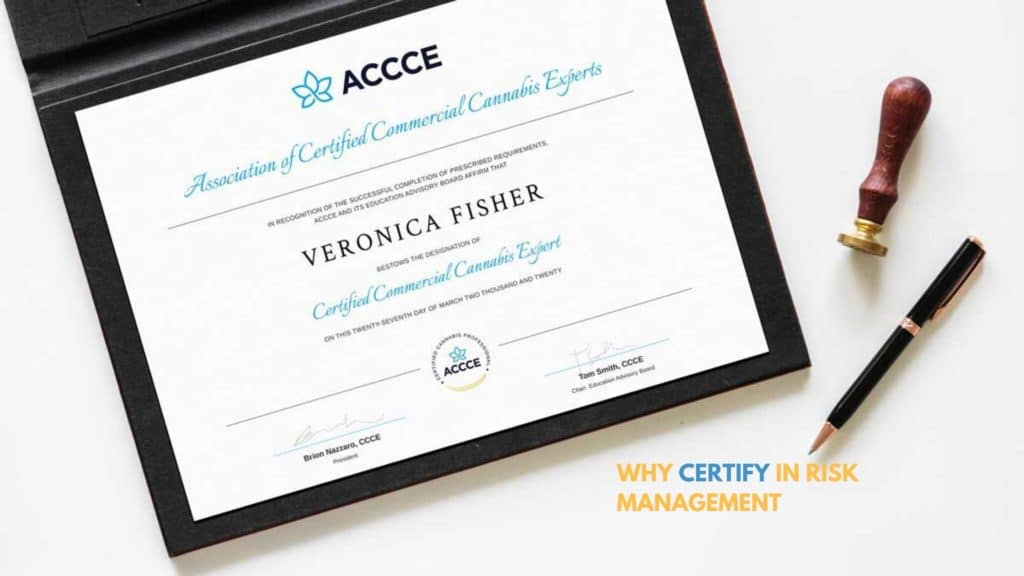
Hey ACCCE,
Why do I want my compliance and risk officer(s) to achieve a risk management certification?
Working in the high-risk cannabis industry against the backdrop of ever-changing regulatory requirements necessitates that the compliance officer in your business is specially trained in the discipline of cannabis risk management and compliance. The cannabis compliance and risk officer roles are demanding, and novices without training may expose the company to additional fines and penalties. Risk management certification gives your personnel the tools they need to deliver reliable results and protect your business using a cost-effective framework.
Understanding the compliance profession
Having an education in the discipline of risk management means that your compliance officer understands how to execute their work within the company’s expectations. The certified compliance officer will be better equipped to effectively develop a comprehensive plan to achieve your business objectives. For instance, using the cannabis risk management framework means that your certified compliance officer has the tools necessary to develop and enhance your compliance program, something reading the regulations won’t provide them. Think about these benefits:
- Highly trained means highly effective
- Understanding best practices bring expertise to your business
- Access to tools and resources that they can implement means time efficient
Make Risk-Based Decisions Part of Your Culture and Stop Firefighting – ACCCE
How will you protect your business and its workers?
Protecting your business from regulatory actions such as fines and license suspensions is a compelling reason to require your compliance and risk officer to be certified. A certified compliance or risk officer is trained to spot high-risk activity prior to non-compliance or misconduct. From there, they can assess the control activities that are in place and institute the change management process to create more effective control activities that will protect your business and mature your compliance and risk programs. Consider these additional benefits:
- An aligned compliance and risk strategy reduces exposure to fines, penalties, and license revocation
- Early-stage non-compliant identification saves you money
Why Should a Company Implement a Risk-Based Approach – ACCCE
Interfacing with executive management
This profession must interface with executive management, so the need to have a clear understanding of roles and responsibilities is critical. Understanding your business’s risk management strategy and how to report to the proper executive authority helps ensure that your officers are trusted advisor and that you can place confidence in the information being presented to you. The compliance and risk officer are also better able to understand how to enable all employees to make informed risk-based decisions. The certified compliance and risk professionals learn to create reports that are useful and are a powerful tool that executive management can use from a top down and bottom-up approach to risk management and compliance. Additional benefits include:
- Clear communication for the executive decision-making process
- A refined hierarchical order for your risk management program
- A professional viewpoint necessary for the position
Risk Officers Support the Board – ACCCE
Access Tailored Tools and Resources
Having an organization such as ACCCE behind you means that your compliance and risk officer are receiving tools and resources that can be relied on time and again for your risk management and compliance purposes. As with any profession, the job is done better and faster with the right tools and knowledge.
Join ACCCE as a member to access tools and resources that will save you time and money when implementing a risk-based approach.



